In 2019, we received some bad news about one of the hotels on our Normandy Tour – they’d closed, permanently.
As I mentioned in a blog post about Champagne, sometimes this doesn’t matter. Sometimes it matters a lot. In this case, Vimoutiers, in the Pays d’Auge, is a strange hotel desert – there isn’t another hotel within 20 miles. It felt wrong that for the sake of a single hotel closure, we couldn’t offer the chance to explore Normandy.
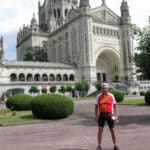
Our Normandy tour started in Falaise, birthplace of William the Conqueror. And this meant we could cycle through the ‘Falaise Gap’ on our way to the village of Camembert, and later in the week we find out just why the ‘Falaise Gap’ is such a big deal.
So we really have had to look carefully at what we want to see in Normandy, and whether a redesign gives us the opportunity to improve some elements of our tour.
I was always keen to include the Pays d’Auge. One of the things that most interested me about Normandy since we first researched the region in 2011 is that there are three quite separate elements within Normandy that make the region famous. Everyone in the UK is familiar with the story of William The Conqueror and the hapless Harold, who took one in the eye for Team GB at Hastings in 1066, and is immortalised in thread on the Bayeux Tapestry.
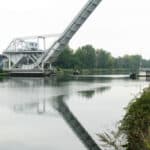
We’ve all heard about Operation Overlord, the Invasion of Normandy in the Second World War. But in France Normandy is famous for … cheese! And apples, cider, calvados, creamy sauces and rich food. And all of that is based around the Pays d’Auge, literally the Land of Auge. It’s basically the catchment area of the river Touques, a stretch of Normandy that runs about 15 or 20 miles East of Caen, to the English Channel. The main town is Lisieux.
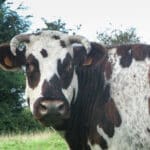
The Pays d’Auge is also where we find the distinctive Norman cows, the apple orchards and the beautiful half-timbered architecture that is associated with Normandy.
So, what have we done? Well I’m delighted that we’ll still be able to spend time exploring the Pays d’Auge, the most beautiful part of Normandy. The tour is now finalised and can be seen on the website (https://thechaingang.co.uk/cycle-tours/france/normandy/).
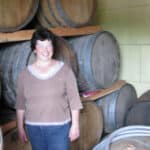
We start in a little place called Mézidon-Canon, about 20 miles southeast of Caen. Over the next two days we’ll be able to cycle among the orchards and pastures as we visit Lisieux, a Calvados distiller in Le Breuil-en-Auge, and cider maker in Repentigny.
We still stay in Pont L’Eveque, and eat at one of my favourite restaurants.
We’ll spend two days in Benouville on the Caen-Ouisterham Canal, taking time to explore Caen,
the grand Abbeys of William the Conqueror and the Caen Memorial Museum. The big plus is what happens after we leave Caen.
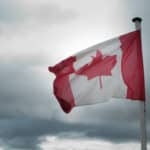
I’ll tell you all about it next month. But basically we have slightly shorter days, we still get to visit the Canada Centre, the US cemetery at Colville-sur-Mer, the German cemetery at la Cambes, the spectacular artificial harbour at Arromanches, and we finish up in beautiful medieval Bayeux, with a visit to the famous Bayeux Tapestry.
Basically, what we should have always have done!
We have two dates for 2023: July 29th – August 5th, 2023, and September 9th – 16th, 2023. Explore the new itinerary here.
And if you like the look of Patrick Hudgell’s photographs, you can find a whole album of them if you click on this link.


